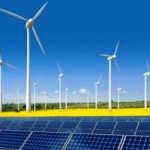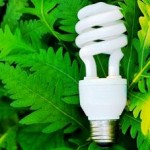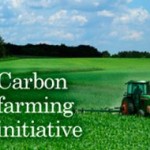

About the Authors:
Dr. Mae-Wan Ho and Prof. Peter Saunders are scientists and co-directors & founders of the Institute of Science in Society (ISIS, www.i-sis.org.uk) dedicated to reclaiming science for the public good and to providing critical, reliable and accessible scientific information to the public and policy-makers. They are also editors of the trend-setting quarterly magazine ‘Science in Society’ published by ISIS.
The UK’s Low Carbon Transition Plan (See UK’s Lacklustre Low Carbon Transition Plan) falls well short of the challenges that face us. Fortunately, we need look no further than across the North Sea to Germany for inspiration. Germany is a large, prosperous, industrialized country rather like the UK in many ways. It has traditionally relied heavily on coal for electricity generation, and has a number of nuclear power plants. But there the similarities end.
Renewable Energies Exclude Nuclear
While the UK’s White Paper envisages the Great Britain of 2020 or 2050 as much the same as today, Germany is looking forward to a quite different future in which Germany will guarantee for itself a secure energy supply and maintain its position as a world leader in new technology. It is forging ahead in the development and use of renewable energy; and nuclear power – seen in the UK as a major component of the future energy mix – is being phased out altogether.
The nearest equivalent in Germany to the British White Paper is a document issued by the German government in January 2009, with the title, “New Thinking, New Energy: Ten Guiding Principles for a Sustainable Energy Supply”.
The document sets out the following objectives:
- By 2020, greenhouse gas emissions are to be reduced by 40 percent from their 1990 levels – double the UK target. (By the end of 2007, emissions had already been reduced by 21.3 percent.)
- Energy productivity should be increased by 3 percent every year, so that in 2020, energy will be used twice as efficiently as in 1990.
- The proportion of energy that comes from renewables should be increased. By 2050, half of primary energy consumption should come from renewable sources. By 2020, the proportions of final energy consumption, gross electricity consumption and energy used for heating that come from renewables should be double their current levels (which are 9 percent, 15 percent and 7 percent, respectively).
- By 2020, a quarter of energy production should come from combined heat and power generation (CHP), again double the present level.
- The use of biofuels should be increased so that by 2020, 7 percent of the greenhouse gas emissions due to fossil fuels are eliminated.
100 Percent Renewables by 2050
But speaking to the press, David Wortmann, Director of Renewable Energy and Resources at Germany Trade and Invest, a government body supporting the country’s renewable energy sector, expressed the view that Germany could be 100 percent renewables-powered by 2050. “It’s ambitious, but Germany can be running on renewable energy by 2050, if there is the political will,” he said.
In 2008, Germany’s primary energy consumed was 7.3 percent renewable, and that figure is predicted to increase to 33 percent by 2020. At that rate of increase, it could well be 100 percent renewable by 2050.
Part of what makes that possible is to use less energy by increasing energy efficiency. The roadmap lays out a draft of new energy efficiency measures including the construction of a smart grid that should reduce consumption by 28 percent in the next two decades: from 13,842 PJ in 2007 to 12,000 PJ in 2020 and 10,000 PJ in 2030. This will mean enormous savings on costly energy imports.
Another strategy is to make full use of Germany’s natural wind resources concentrated along the northern coastlines, where huge offshore wind parks in the North Sea could generate as much as 10 GW or more, feeding electricity into a smart national grid connecting the north and east of the country and south and west with optimal efficiency using high voltage direct current.

Solar energy will be imported via Italy from the solar thermal plants to be built in the sun-soaked deserts of North Africa (See Green Energies – 100% Renewable by 2050, an ISIS publication).
Electric powered cars rechargeable from renewable energy sources will be racing down Germany’s autobahns and cut greenhouse emissions substantially.
“The technical capacity is available for the country to switch over to green energy, so it is a question of political will and the right regulatory framework,” Wortman said. Germany plans to use all the renewable energy sources at its disposal – wind, solar, geothermal, hydropower and biomass – in an optimum mix.
Wortman praised the government for its plans to invest more into research. “Germany has been a centre of innovation in renewable energy technologies for years. There is a real desire to see it continue to be a place where new central renewable energy technologies are development. Not only the government, but also companies, are focusing more resources on research,” Wortman said.
He predicted that bio-energy will play a key role, but only where it is sustainable and did not compete with food crops or supplies. In 2008, biomass supplied 3.7 percent of the electricity in Germany, up from 3.1 percent in 2007; while wind power’s share increased by 0.1 percent from 6.4 to 6.5 percent.
He singled out a biogas electricity plant developed by Dr. Michael Stelter of the Fraunhofer Institute for Ceramic Technologies and Systems in Dresden that uses compost and waste. A new procedure that uses enzymes to break down cellulose in compost waste means that the plant produces 30 percent more biogas and does this in 30 days, rather than the current 80 days.
To optimize efficiency, the biogas is pumped into fuel cells that operate at 850°C, allowing the plant to convert biogas methane to electricity at 40 to 55 percent efficiency. Taking into account the heat produced, the fuel cell has a conversion rate of 85 percent.














